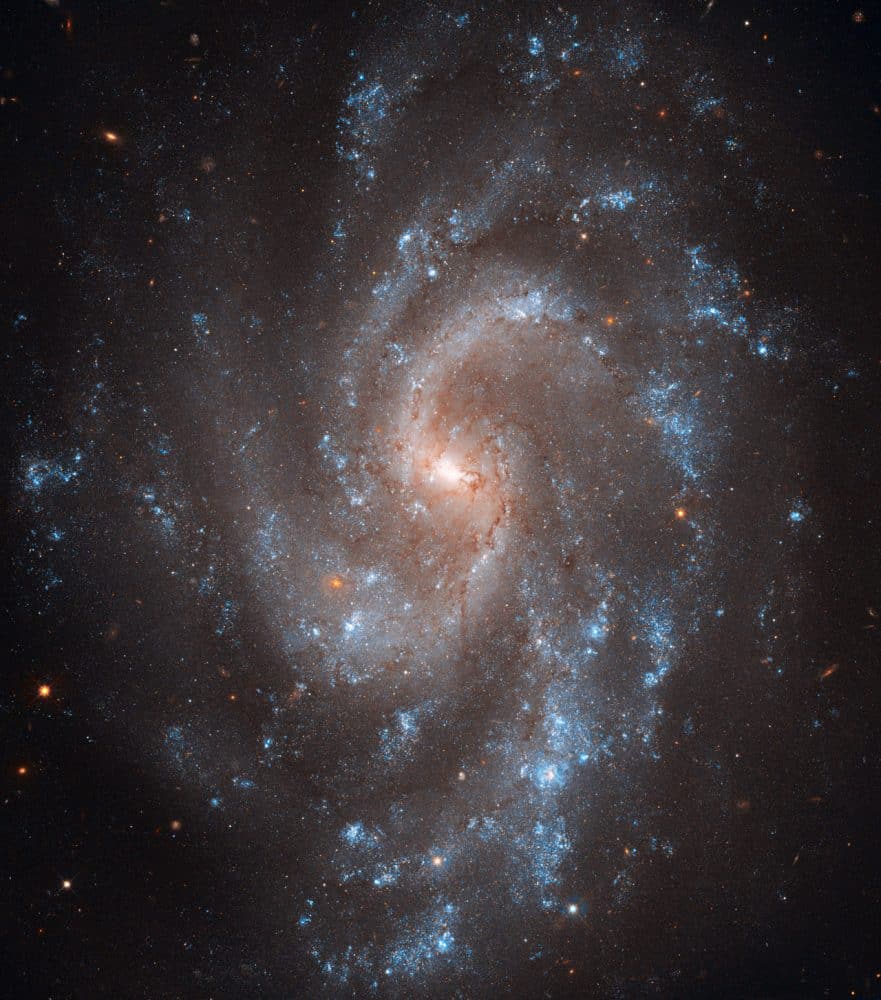The Cosmos with NGC 5584
NGC 5584 was first spotted as a faint glow in the constellation of Virgo by the great visual observer E. E. Barnard, back in 1881, using just a 12.5-cm telescope. But, by bringing the power of Hubble to bear, the galaxy can be resolved into thousands of separate stars. Some of these stars vary in brightness and are classified as Cepheids. These are brilliant pulsating stars with a remarkable property — once the time it takes a Cepheid to brighten and fade is known, then it is possible to find how bright it actually is. When this information is combined with a measurement of how bright the star appears it is easy to work out how far away the star actually lies. This method is the most accurate and effective way to measure the distances to most nearby galaxies.
This trick has now been used as part of a major new study of the expansion rate of the Universe, led by Adam Riess at the Space Telescope Science Institute in Baltimore. By studying many Cepheids in several galaxies the team has been able to refine our knowledge of this expansion rate, expressed as a number known as Hubble’s constant, to an accuracy of 3.3 percent.
In addition to many Cepheids NGC 5584 was also recently the site of a type Ia supernova. These dramatic explosions of white dwarf stars are used as reference beacons for mapping the expansion, and acceleration, of the more remote Universe so this galaxy is a very valuable link between the two distance scales.
